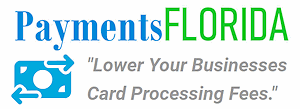Domain Name Registry and Domain Name Registration Questions
How do domain name names work?
A domain name is very similar to an address forwarding service. The domain name is the address people type in their browser to get to your Web site. The domain name points to the "real" address of the server that contains your Web site content. The "real" address is called the IP address and is a series of numbers, such as 123.23.234.45. This IP address then points to the location on the server where your Web site files are located. Domain names are used instead of IP addresses because most people find it much easier to remember a name rather than a series of numbers. So, your domain name points to your IP address, which is the location of your Web site files on a server, and allows users all across the Internet to view your Web pages.
How do I register a domain name?
You can check to see if a domain name is available and register it if it is, at the following Domain Name Registry
What are name servers?
Name servers are the Internet's equivalent to a phone book. A name server maintains a directory of domain names and matching IP addresses. The information from all the name servers across the Internet is then gathered in the Central Registry. Host companies check in with the Central Registry on a regular schedule to get updated name server information, which makes it possible for people across the Internet to access your Web site. When your domain is set up, information about your domain name is added to our name servers. We then send that information to the Central Registry so that other name servers on the Internet may locate your Web site. It usually takes about 48 hours before name servers on other networks are able to access the information after the Central Registry gets it. This 48-hour period is referred to as the propagation period.
What is a domain name?
A domain name is a Web address. The domain name is the same as an IP address (which represents a physical point on the Internet), except the domain name is letters and numbers that make sense to humans, while the IP address is a series of numbers. Thus a domain name locates an organization or other entity on the Internet. When someone types a domain name into a Web browser, the requested Web page will open. For example, the domain name www.yourdomain.com locates an Internet address for "yourdomain.com."
A domain name consists of a top-level and a second-level domain. The "com" part of the domain name generally reflects the type or purpose of the organization or entity and is called the top-level domain (TLD) name. The part of the domain name located to the left of the dot (" . ") - "yourdomain" in this case - is called the second-level domain (SLD) name. The second-level domain name - being the "readable" part of the address - refers to the organization or entity behind the Internet address. Second-level domains must be registered through an Internet Corporation for Assigned Names and Numbers (ICANN) accredited registrar.
What do I do after registering a domain name?
Do you have a web site already designed for your new domain name? If your Web site is complete, follow these instructions to get your site on the Internet. 1. Acquire a hosting account.2. Modify your domain name servers (DNS) to the addresses provided by your hosting provider.
3. Upload your Web site to the Internet. Did you register this domain name as an investment and wish to sell it?
Domain names can be a great investment. If you have registered a domain name that you are not using, maybe someone else can! Go to the Account Manager and set up a For Sale parked page for your domain name. Don't forget to include your contact information!
Did you register this domain name because it is similar to your other domain names?The more domain names you register, the better. Prevent others from registering a similar domain name to yours - just to steal away your customers! What to do with all these names? Forward them to your main domain name!
Do you want to wait to use your domain name?Maybe you haven't decided what to do with your new domain name. Don't worry - there's no rush. You can leave it parked with Fencl Web Design.Com for the length of your registration
.Will it be registered in my name?
Yes, any public domain registration that you register through Fencl Web Design.Com will have your name as the registrant, just as if you had registered it through any other ICANN certified Registrar like Network Solutions/Verisign, Register.com, or our other competitors. You will be able to alter all four contact fields for the domain at will, alter its name servers, or use the domain to register your own name servers. We do not charge for any of these services, giving you the freedom to do with your domain, as you want, when you want.
What is the Uniform Dispute Resolution policy?
ICANN's Uniform Domain Name Dispute Resolution Policy (UDRP) defines how disputes over domain-name registrations are resolved in the global top-level domains (.biz, .com, .info, .name, .name, .net, .org, .pro, and .ws, as well as .aero, .coop, and .museum). In accordance with the Uniform Domain Name Dispute Resolution Policy, you can dispute a claim to a domain name by following the dispute process. The UDRP does not apply to country-code top-level domains, except in a few cases where the local administrator has decided to adopt it.
Can I change a domain name or get a refund if I misspelled it when I ordered it?
Fencl Web Design.Com is unable to change or edit the spelling of a domain name after it has been registered. The system is setup to attempt to register the domain exactly as it is entered. Should the registration succeed, charges will be incurred even if the domain entered was not what the person actually intended to type. The system only knows what is actually typed. Because Fencl Web Design.Com is charged the moment any domain is submitted, registrations are not refundable
I want to register a domain that just expired. When will it be available?
Most registrars allow at least a 15 day grace period after a domain name expires for the registrant to renew it. That grace period can be as long as one year in some cases. If the current registrant does not renew it in the time allotted then that domain name should become available. The actual grace period is different for each individual registrar. Once the domain is released you will be able to register it through Fencl Web Design.Com.
I just registered a new domain name. How soon can it be used?
New domains and changes to domains may take up to 48 hours to become effective. This is due to the number of networks involved, and the fact that those networks are controlled by several different agencies. This delay applies to all domains and all Registrars. Please allow for this delay when planning Web sites or configuring a domain to work with your email.
What is a top-level domain (TLD)?
A top-level domain is the part of the domain name located to the right of the dot (" . "). The most common TLDs are .com, .net and .org. Several new top-level domains have been added to the menu recently, including, .biz, .info, .name, and .ws. The top-level domains have certain guidelines attached, but are for the most part available to any registrant, anywhere in the world. Exceptions are the restricted TLDs (rTLDs) - which include .aero, .biz, .edu, .mil, .museum, .name, and .pro - that require the registrant to represent a certain type of entity, or to belong to a certain community. The .name TLD is available strictly for individuals, while .edu is reserved for educational entities, such as universities or high schools. Where appropriate, a top-level domain name can be of geographic significance and hence only available to registrants in the locale defined by the TLD. These are called country-code TLDs (ccTLDs) and include such top-level domains as .bz (Belize),.ca (Canada), .dk (Denmark), .ec (Ecuador), ie (Republic of Ireland), .uk (United Kingdom), .us (United States), and .zw (Zimbabwe).
What does it mean to register a domain name?
The Internet domain name system (DNS) consists of a directory of all the domain names and their corresponding computers registered to particular companies and persons using the Internet. When you register a domain name, it will be associated with the computer on the Internet you designate during the period the registration is in effect.
Can I register a domain name if I don't have my web hosting arranged yet?
Yes, you can register as many domains names as you'd like and choose to have them parked until you have found a hosting provider. To do so, register a domain name and select "Parking." If this option is chosen, a Parked Page will be displayed while you finish creating your site, sell the domain, etc. The temporary site will inform anyone passing by that this is the future location of your site. The temporary site will be active 24-48 hours after you have completed the registration.
What can I do about a Trademark dispute?
Unfortunately, we cannot make any changes to the registrant fields without a legal change of ownership or a court order or an order by WIPO. If you feel that you are the rightful owner of the domain name, please contact the registrant of the domain name. If you are unable to find a satisfactory solution with the current registrant, you will need to settle the issue with a court order. We do not get involved in domain disputes. We cannot make changes to a registrant field without a legal change of ownership or a court order. Discrepancies with trademark or rightful ownership are handled by WIPO (World Intellectual Property Organization). The email is domain.disputes@wipo.int. If a domain name is under a dispute, the domain name will be locked once we are notified by WIPO. It cannot be modified or transferred to another registrar. Once we receive a court or WIPO ruling we update the domain name accordingly.
Which extensions are not available, and why?
The sponsored top-level domains .aero, .coop, .museum, and .pro. require the registrant to be member of or affiliated with specific communities, and are therefore not accessible to the general public. The .aero TLD, for example, requires the registrant to prove membership of the aviation community. Similarly, .gov and .mil are reserved for the U.S. Government, and U.S. Military, respectively, while .edu is restricted to educational entities. Country-code TLDs outside the United States are also excluded.
How do I check if a domain name is available?
To find out if a domain name is available, go to our Domain Names Page and enter the desired domain in the domain name search box; then select the preferred extension (top-level domain) from the drop-down list. Click GO to instantly find out if the requested domain is available. If it is, you may proceed to the next steps in the registration procedure.
If the domain name you requested is already taken you will be presented with any available alternatives (i.e. same second-level domain, but with a different extension). For example, you may be able to select a .info or .ws top-level domain, rather than the requested .com. Thus you would be registering www.whatever.info, instead of www.whatever.com. If none of the suggested alternatives are to your liking, you can start over again and search for a different domain for your future Web site.
More Facts on Domain Names
Still need some more facts before registering your domain name? Here are a few more domain name definitions and factsthat may answer questions you have. If you can't find the answer on our web site please call us toll free at 1-888-7-WEB-PRO and we will try our best to help you.
Check Domain Name Availability
Domain names are being bought up at a record pace. Get your domain name now before it's gone!
Enter desired domain to check availability.








